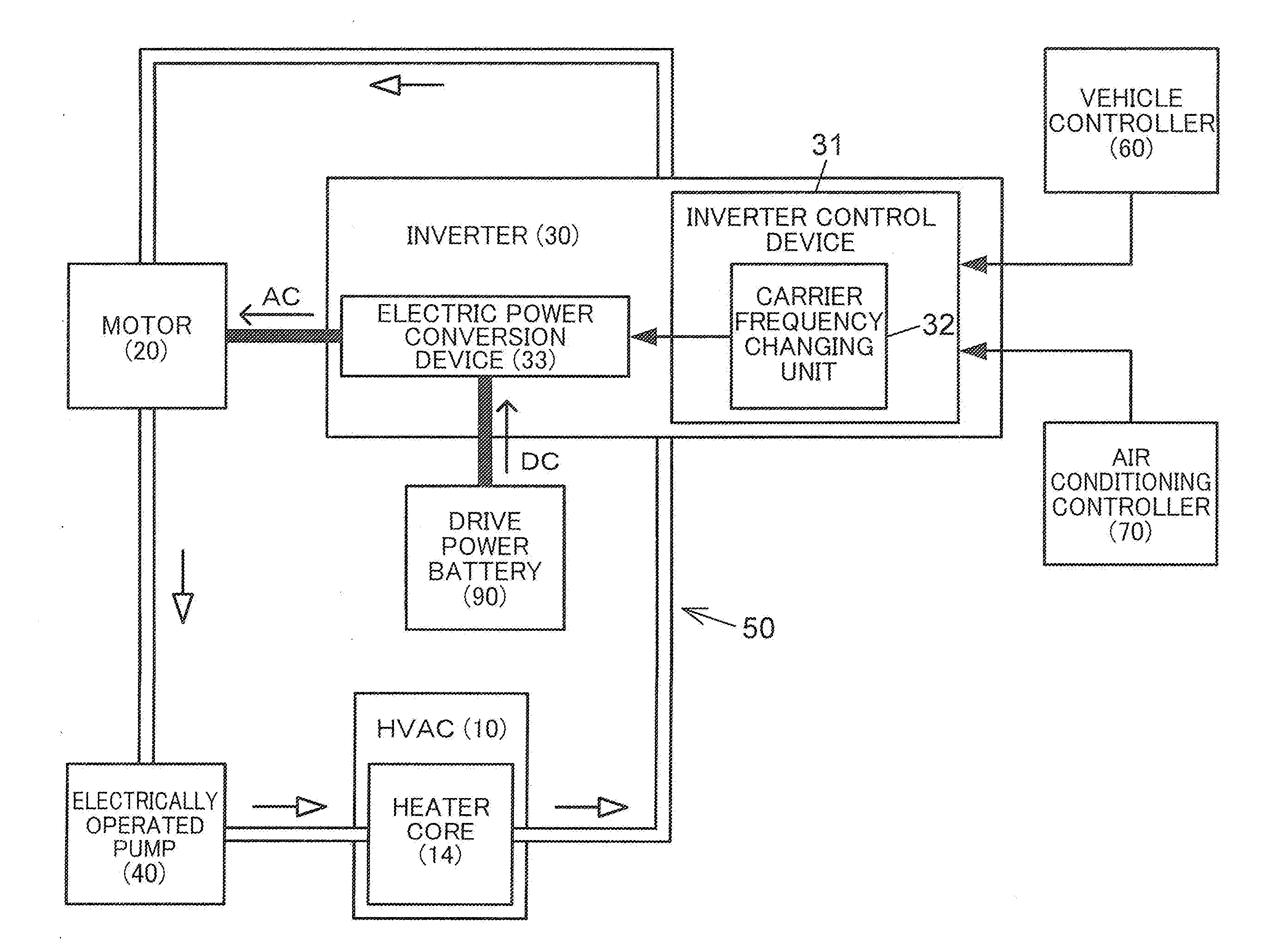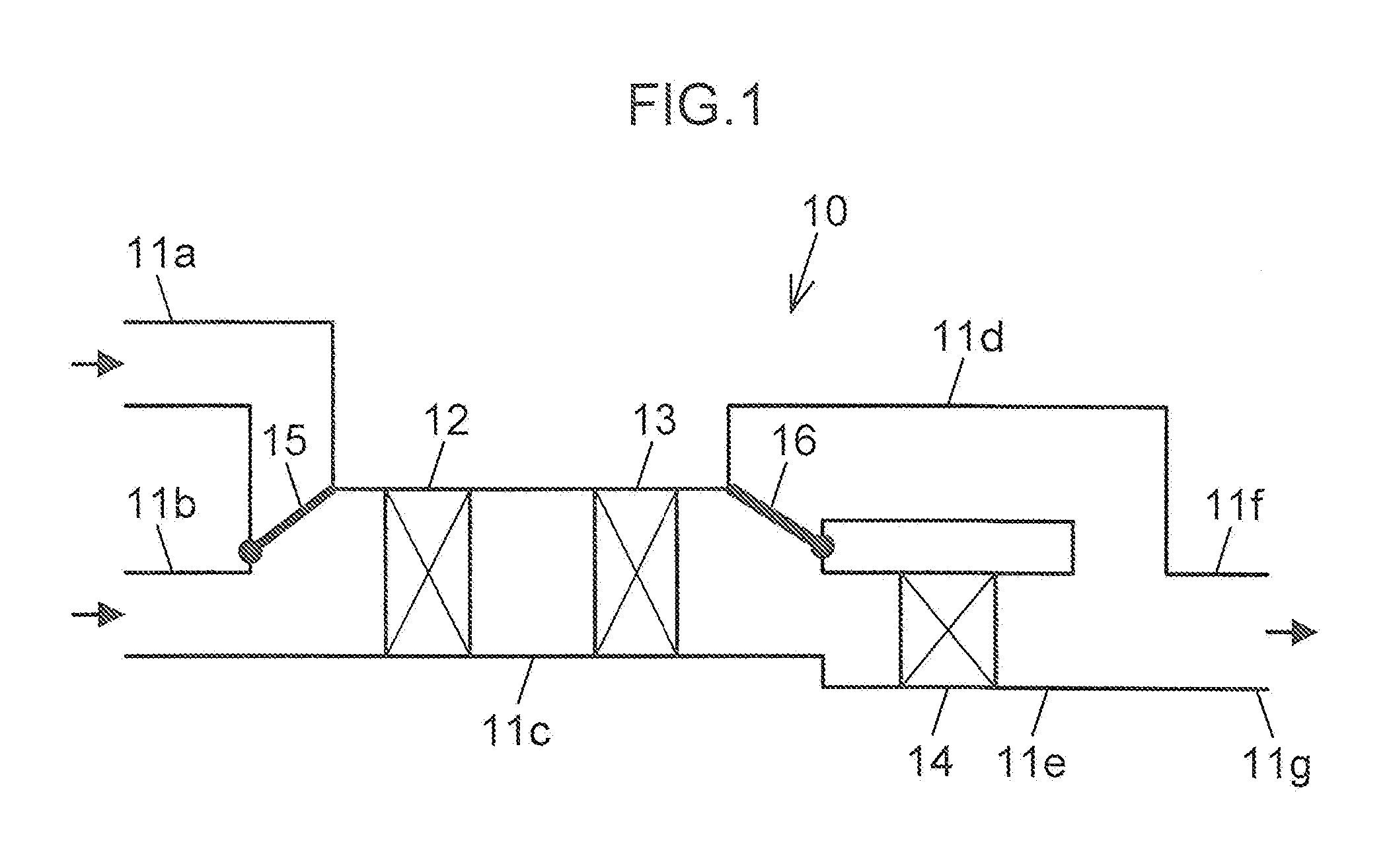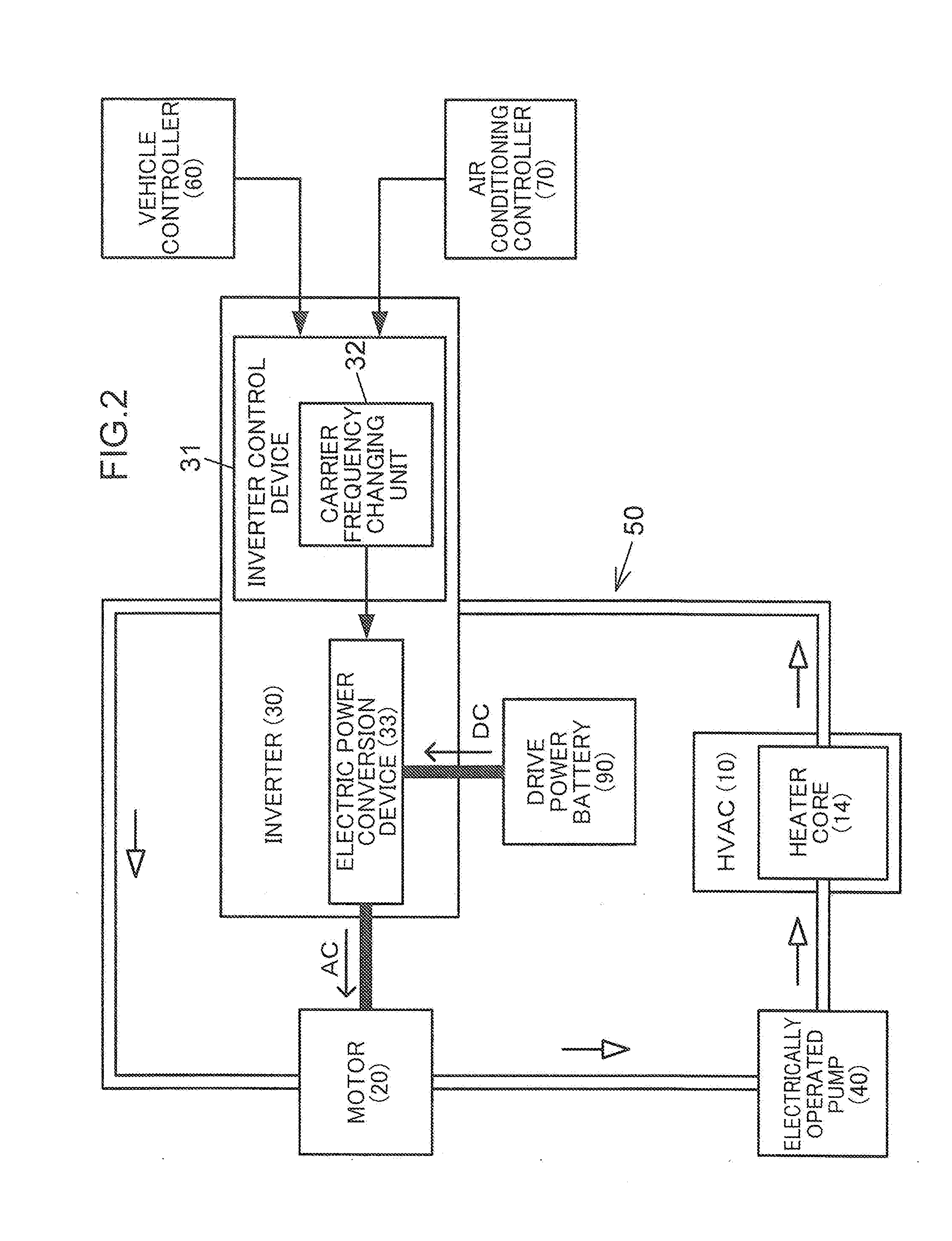Vehicular air conditioning device
- Summary
- Abstract
- Description
- Claims
- Application Information
AI Technical Summary
Benefits of technology
Problems solved by technology
Method used
Image
Examples
Embodiment Construction
(1) Configuration of Air Conditioning Device
[0014]FIG. 1 is a block diagram illustrating a mechanical configuration of a vehicular air conditioning device 10 embodying the present invention. In the embodiment, unless otherwise specifically stated, the terms “upstream” and “downstream” refer to airflows in the air conditioning device 10.
[0015]In the embodiment, the air conditioning device 10 is installed in an electric vehicle, which is not provided with an internal combustion engine as a drive source, but is provided only with a motor 20 (see FIG. 2). The air conditioning device 10 is disposed on a front portion of a vehicle compartment, and conditions the air in the space inside the vehicle compartment. The air conditioning device 10 includes an external air inlet passage 11a for introducing air (external air) in the space outside a vehicle into the air conditioning device 10, and an internal air inlet passage 11b for introducing air (internal air) in the space inside a vehicle com...
PUM
 Login to View More
Login to View More Abstract
Description
Claims
Application Information
 Login to View More
Login to View More - R&D
- Intellectual Property
- Life Sciences
- Materials
- Tech Scout
- Unparalleled Data Quality
- Higher Quality Content
- 60% Fewer Hallucinations
Browse by: Latest US Patents, China's latest patents, Technical Efficacy Thesaurus, Application Domain, Technology Topic, Popular Technical Reports.
© 2025 PatSnap. All rights reserved.Legal|Privacy policy|Modern Slavery Act Transparency Statement|Sitemap|About US| Contact US: help@patsnap.com



